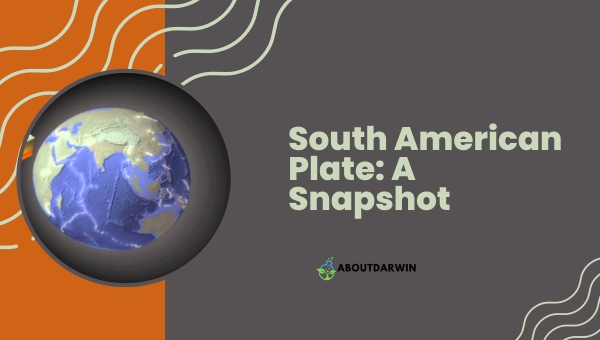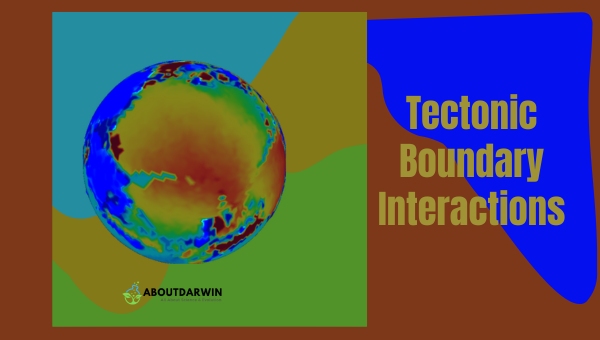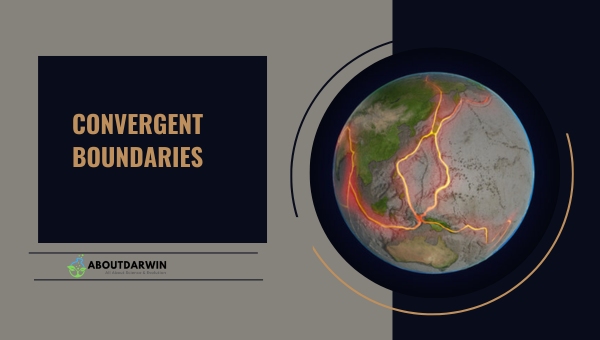Physical Address
304 North Cardinal St.
Dorchester Center, MA 02124
The South American Plate, a major tectonic plate, plays a pivotal role in shaping the geology of South America. Stretching across the continent, it is bordered by the Nazca Plate to the west and the African Plate to the east.
This dynamic interaction leads to fascinating geological phenomena, including the Andes mountain range’s formation and significant seismic activity.
As we explore the intricacies of this plate, intriguing questions arise about its impact on natural landscapes and human life. What secrets lie beneath its surface?
Contents
The South American Plate, one of Earth’s largest tectonic plates, encompasses the continent of South America and a section of the Atlantic Ocean.

With an area of approximately 43 million square kilometers, its importance within the global tectonic system cannot be understated. Here’s a closer look at its geological aspects:
Regarding movement, the South American Plate exhibits a dynamic interaction with its neighboring plates. Its western edge, where it meets the sea, serves as the destructive boundary with the large oceanic crust of the Nazca Plate.
This interaction is responsible for forming the Andes mountain range, which runs along South America’s entire western coastline.
On the eastern edge, facing the Atlantic Ocean, the South American Plate actively spreads apart from the African Plate. This divergent boundary forms the Mid-Atlantic Ridge, an underwater mountain range that spans the entire ocean floor between the Americas and Africa.
Interestingly, the South American Plate’s southern boundary with the Antarctic Plate isn’t as clearly defined, primarily due to the complex nature of geological processes beneath the Scotia Sea.
Here is a summary of the South American Plate’s critical tectonic boundaries:
| Boundary Type | Neighboring Plate |
|---|---|
| Divergent (Eastern) | African Plate |
| Destructive (Western) | Nazca Plate |
| Complex (Southern) | Antarctic Plate |
The movement of the South American Plate plays a significant role in shaping our planet’s geography and driving natural phenomena. For instance, the subduction of the Nazca Plate beneath the South American Plate leads to frequent earthquakes and volcanic eruptions in the region.
Additionally, the ongoing separation between the South American Plate and the African Plate contributes to the continuous widening of the Atlantic Ocean.
The South American Plate holds a pivotal position in the Earth’s tectonic system. Its interactions with neighboring plates have been, and will continue to be, a driving force behind various geological transformations and events that shape our natural world.
The South American Plate is a crucial component of Earth’s tectonic system, influencing the geology and geography of the continent of South America and surrounding regions.
Its interactions with neighboring plates have led to the formation of significant geological features, including the Andes Mountains, and are responsible for various seismic activities.
Here are key facts about this fascinating tectonic plate:
These facts illustrate how dynamic and significant the South American Plate is within global tectonic processes, affecting both geological features and seismic activity across a vast region.
The South American Plate is a major tectonic player with diverse boundary interactions. In this section, we’ll dive into the specifics of its tectonic boundaries and the resulting movements.

These interactions is crucial for predicting geological events such as earthquakes and volcanic eruptions.
The South American Plate shares its boundaries with several tectonic plates:
These boundary interactions can be categorized into three different types:
Examining each type will give us a better understanding of the South American Plate’s movements and interactions.
At convergent boundaries, tectonic plates move toward each other. A very notable interaction takes place between the South American Plate and the Nazca Plate.

As the denser oceanic Nazca Plate moves eastward, it gets forced beneath the continental South American Plate, creating the Peru-Chile Trench. This subduction process causes the formation of the Andes Mountains Range and drives various seismic activities in the region.
Divergent boundaries involve tectonic plates moving away from each other, usually found at mid-ocean ridges. The South American Plate experiences a divergent interaction with the Antarctic Plate, which runs along the South Atlantic Ridge.
The separation of these two plates causes the new oceanic crust to emerge from the underlying magma, prompting slow but steady expansion of the South Atlantic Ocean.
Transform boundaries occur when tectonic plates slide past each other horizontally. In South America, a significant example is the boundary between the South American and Caribbean Plate.
The sliding movement along the Caribbean-South American Transform Fault results in frequent earthquakes in countries like Colombia and Venezuela.
The South American Plate engages in all three types of boundary interactions – convergent, divergent, and transform. This diverse mix of interactions makes the continent a hotspot for geological events, shaping its landscape and its continuous evolution over time.
When we examine the South American Plate, it’s essential to understand the intricacies of its movements and the resulting geological phenomena. The plate’s movements are predominantly influenced by its interaction with neighboring tectonic plates, including the Nazca and Caribbean Plate.
In this section, I’ll delve into the mechanisms behind these interactions, helping to shed light on this complex topic. The South American Plate’s western boundary, where it meets the Nazca Plate, is known as a convergent boundary.
At this location, the oceanic Nazca Plate subducts beneath the continental South American Plate, leading to a variety of geological events such as:
One notable example is the Andes mountain range, which primarily developed due to this subduction process. Earthquakes in this region can be quite powerful, and some of the world’s most active volcanoes are situated along the Andes.
In contrast, the eastern boundary of the South American Plate shares a divergent border with the Mid-Atlantic Ridge. At this boundary, a new oceanic crust is created as the plates move away from each other. As a result, less dramatic geological activity occurs in this area, mainly limited to:
The northern boundary of the plate, where it meets the Caribbean Plate, presents a complex tectonic environment. Here, the movement is primarily transformed due to the plates sliding past one another.
However, this area also experiences some subduction, leading to an amalgamation of geological events.
As the South American Plate moves, several factors contribute to its ongoing development:
By understanding these intricacies of plate movement, we gain valuable insights into the fascinating world of tectonics on the South American Plate.
The South American Plate is a significant tectonic plate that encompasses the continent of South America and extends into the Atlantic Ocean. Here are the key characteristics and details about this plate:
The South American Plate interacts with several other tectonic plates, creating diverse geological features:
The interactions at these boundaries lead to various geological phenomena:
The South American Plate plays a crucial role in shaping not only the continent’s geography but also its geological activity.
The South American Plate is a fundamental aspect of Earth’s tectonic framework, influencing the continent’s geography and geological activity.
Covering around 43 million square kilometers, it interacts with neighboring plates such as the Nazca, African, and Antarctic Plates, leading to significant geological phenomena like the Andes mountain range and frequent earthquakes.
These interactions is vital for predicting natural disasters and comprehending the dynamic processes shaping our planet. As research continues, the complexities of the South American Plate will reveal more about its role in Earth’s ongoing geological evolution.